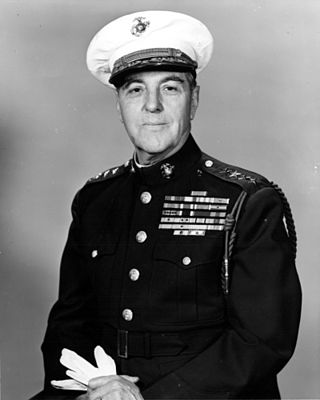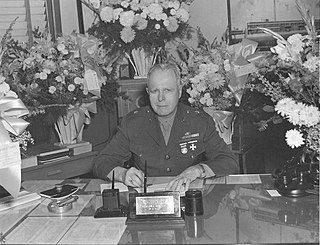
Military ranks are a system of hierarchical relationships, within armed forces, police, intelligence agencies or other institutions organized along military lines. The military rank system defines dominance, authority, and responsibility in a military hierarchy. It incorporates the principles of exercising power and authority into the military chain of command—the succession of commanders superior to subordinates through which command is exercised. The military chain of command constructs an important component for organized collective action.

A non-commissioned officer (NCO) is a military officer who does not hold a commission. Non-commissioned officers usually earn their position of authority by promotion through the enlisted ranks. In contrast, commissioned officers usually enter directly from a military academy, officer training corps (OTC) or reserve officer training corps (ROTC), or officer candidate school (OCS) or officer training school (OTS), after receiving a post-secondary degree.
Corporal is a military rank in use by the armed forces of many countries. It is also a police rank in some police services. The rank is usually the lowest ranking non-commissioned officer. In some militaries, the rank of corporal nominally corresponds to commanding a section or squad of soldiers.
Staff sergeant is a rank of non-commissioned officer used in the armed forces of many countries. It is also a police rank in some police services.
A master sergeant is the military rank for a senior non-commissioned officer in the armed forces of some countries.
Sergeant major is a senior non-commissioned rank or appointment in many militaries around the world.

Modern Russian military ranks trace their roots to the Table of Ranks established by Peter the Great. Most of the rank names were borrowed from existing German/Prussian, French, English, Dutch, and Polish ranks upon the formation of the Russian regular army in the late 17th century.

Rank insignia in the French Army are worn on the sleeve or on shoulder marks of uniforms, and range up to the highest rank of Marshal of France, a state honour denoted with a seven-star insignia that was last conferred posthumously on Marie Pierre Koenig in 1984.
The Military ranks of Finland are the military insignia used by the Finnish Defence Forces. The ranks incorporates features from Swedish, German, and Russian armed forces. In addition, the system has some typically Finnish characteristics that are mostly due to the personnel structure of the Finnish Defence Forces. The ranks have official names in Finnish and Swedish languages and official English translations. The Swedish forms are used in all Swedish-languages communications in Finland, e.g. in Swedish-speaking units of Finnish Defence Force. The system of ranks in the Swedish Armed Forces is slightly different.

A colonel in the United States Army, Marine Corps, Air Force and Space Force, is the most senior field-grade military officer rank, immediately above the rank of lieutenant colonel and just below the rank of brigadier general. Colonel is equivalent to the naval rank of captain in the other uniformed services. By law, an officer previously required at least 22 years of cumulative service and a minimum of three years as a lieutenant colonel before being promoted to colonel. With the signing of the National Defense Authorization Act of 2019, military services now have the authorization to directly commission new officers up to the rank of colonel. The pay grade for colonel is O-6.

The military ranks of Israel are the military insignia used by the Israel Defense Forces (IDF). Because the IDF is an integrated force, ranks are the same in all services The ranks are derived from those in the paramilitary Haganah, which operated during the Mandate period in order to protect the Yishuv.

Gerald Carthrae Thomas was a United States Marine Corps general who served as Assistant Commandant of the Marine Corps. He retired from the Marine Corps in 1956 with more than 38 years of distinguished service which included duty on four continents, spanning the two World Wars, Haiti, and the Korean War. During World War I, he fought in major offensives, including the Battle of Belleau Wood, and was awarded the Silver Star and the Purple Heart.
A battlefield promotion is an advancement in military rank that occurs while deployed in combat. A standard field promotion is advancement from current rank to the next higher rank; a "jump-step" promotion allows the recipient to advance by two ranks.

The senior enlisted advisor to the chairman of the Joint Chiefs of Staff (SEAC) is the most senior non-commissioned officer (NCO) position overall in the United States Armed Forces. The SEAC is appointed by the chairman of the Joint Chiefs of Staff to serve as a spokesperson to address the issues of enlisted personnel to the highest positions in the Department of Defense. As such, the SEAC is the primary enlisted advisor to the chairman, and serves at the pleasure of the secretary of defense. The SEAC's exact duties vary, depending on the chairman, though the SEAC generally devotes much of their time traveling throughout the Department of Defense, to observe training and communicating to service members and their families. The SEAC's normal term of assignment runs concurrently with the chairman, but an incumbent may be reappointed to serve longer. The first member to hold this post was William Gainey. The current SEAC is Troy E. Black, USMC who assumed the duties on 3 November 2023.
Hispanics in the United States Marine Corps, such as Private France Silva who during the Boxer Rebellion became the first Marine of the thirteen Marines of Latin American descent to be awarded the Medal of Honor, and Private First Class Guy Gabaldon who is credited with capturing over 1,000 enemy soldiers and civilians during World War II, have distinguished themselves in combat. Hispanics have participated as members of the United States Marine Corps in the Boxer Rebellion, World War I, the American intervention in Latin America also known as the Banana Wars, World War II, the Korean War, the Vietnam War, the Gulf War and most recently in the military campaigns of Afghanistan and Iraq.

An officer is a person who holds a position of authority as a member of an armed force or uniformed service.

Maurice Clinton Gregory was a decorated mustang officer of the United States Marine Corps with the rank of brigadier general. He spent his career mostly in Quartermaster Department of the Marine Corps beginning as private in the field assignments, ultimately reaching the general's rank and command of Depot of Supplies, Philadelphia during World War II.
The military ranks of the German Empire were the ranks used by the military of the German Empire. It inherited the various traditions and military ranks of its constituent states.
Rising from the ranks,through the ranks or commissioned from the ranks refers to enlisted soldiers being commissioned as officers. In class-conscious societies of the past, such as Britain during the Napoleonic Wars, for example, this was a relatively rare occurrence.










